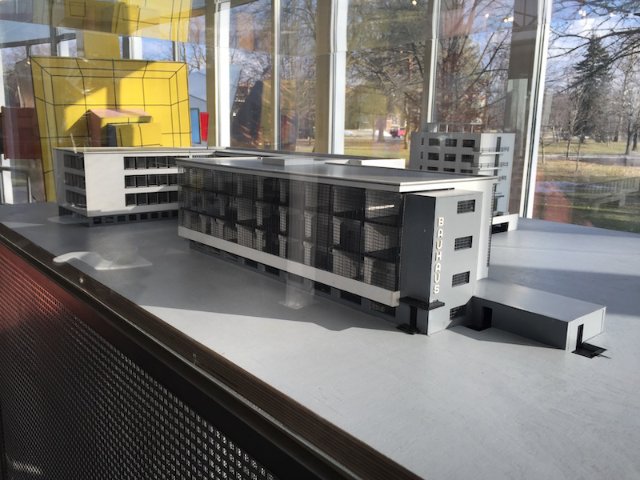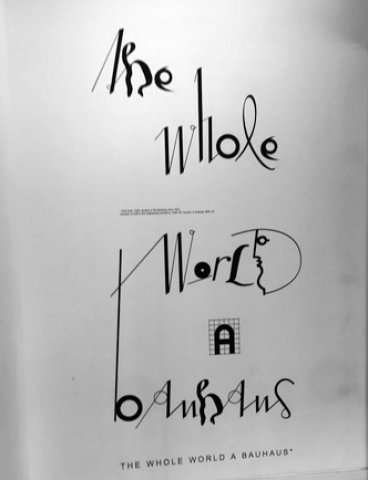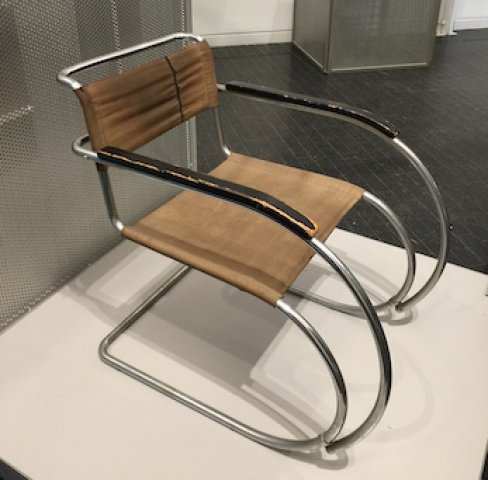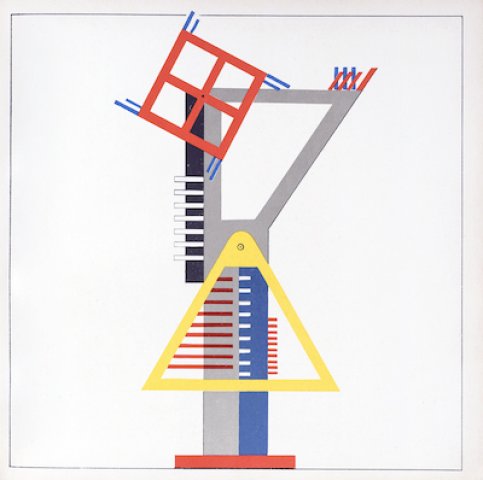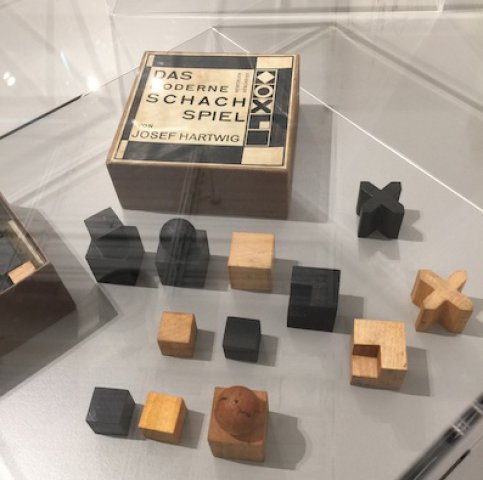Bauhaus in Chicago
100 Years Celebrated at Elmhurst Art Museum
By: Nancy Bishop - Mar 01, 2019
Furniture. Textiles. Toys. Home goods. Buildings. Photography. Theater design. Typography and graphic design. It’s hard to exaggerate how much the visual design that surrounds us is influenced by the work of the Bauhaus, the iconic but short-lived school of art and architecture that sought to unite art with industrial technology.
Briefly, the Bauhaus was a German design school founded in 1919 that made its home in
The Whole World a Bauhaus, the 100th anniversary exhibit of Bauhaus work, is now on display at the Elmhurst Art Museum—and this is the only place in the U.S. where you will be able to view this important exhibit of art, design and architecture. The exhibit includes photographs, works on paper, models, documents, films, audio recordings and furniture and household objects from the 14 years—1919-1933—in which the Bauhaus operated in
This exhibition is part of the Year of German-American Friendship initiated by the German Federal Foreign Office and the Goethe-Institut, and supported by the Federation of German Industries.The exhibit was curated by Boris Friedewald, a German author and art historian.
All the World a Bauhaus is organized around eight chapters or themes, each focusing on an aspect of work and life at the Bauhaus during its operation: Art, Crafts, and Technology; Floating; Community; Encounters; The Total Work of Art; New Man; Radical Pedagogy; and Experiment. The museum offers a well-designed catalog in tabloid newspaper size that nicely summarizes the exhibit and shows many illustrations of Bauhaus work. (It’s free but a $5 donation is requested.)–
Virtual Bauhaus: An Interactive Exhibition will be available March 1-22, enabling visitors to put on VR (virtual reality) glasses and tour the
Highlights of the Bauhaus exhibit
— The chess set and building blocks game (titled Small Ship-Building Game) shown in a vitrine.
— A cradle in bright yellow, red, white and blue lacquered wood and tubular steel, designed by Peter Keler in 1922. He was a student at the time and later became an assistant to Wassily Kandinsky. The cradle was originally part of a geometric series of beds for adults and toddlers. You can buy licensed reproductions of the cradle today.
— A well-worn armchair (1927-32) designed by Mies himself that resembles the ubiquitous tubular steel and woven cane side chairs we know as Breuer chairs. Marcel Breuer designed them in the 1920s, along with the tubular steel and black leather chair known as the Wassily chair. (Breuer was said to be inspired by bicycle construction and plumbing fabrication.) The chairs were originally manufactured by Thonet, a German-Austrian furniture maker known for its bentwood designs.
.
— Early photographs of some of the Bauhaus founders, teachers and artists, many of them shown in informal social settings.
— A photograph of a disembodied pair of legs, feet shod in fluffy slippers, and titled “Slippers.”
— Package design and publications showing the iconic Bauhaus typography and use of bold sans serif fonts, especially Herbert Bayer’s 1925 Universal typeface. It’s a bold sans serif based on circular forms and set only in lower-case form. As Bayer is quoted as saying, “Why should we print with two alphabets? Both a large and a small sign are not necessary to indicate a single sound. Capital A equals small a.”
The Bauhaus in Germany and Chicago
The Bauhaus school, founded in
The history of the Bauhaus is not a happy one. From the beginning, it was beset by political and artistic disputes; women were refused entrance to the elite architecture program and relegated to the textiles department; some of the Bauhaus teachers had “complicated” relationships with Nazism. After
Why, with all the large museums of modern art in the
Mies designed just two other houses. One is the Farnsworth House in
More Bauhaus Chicago
Herbert Bayer, one of the early Bauhaus designers and typographers, was a design consultant for Chicago-based Container Corporation of
As a student of art and design history (and at that time a graduate student in communications), I was fortunate to be able to visit the Crown Hall exhibit. I spent an entire day there and was overwhelmed with the expansive genius of the Bauhausians’ work. I’ve written about that experience here and still have the square 365-page catalog, which needs repair. I’ve located a book-repair specialist who will try to save it for me.
Another exhibit, Chicago’s Bauhaus Legacy, was shown at the Ukrainian Institute of Modern Art in 2013. The exhibit showcased art and design by students and teachers from the New Bauhaus, the
The Bauhaus exhibit
The
The Whole World a Bauhaus is on exhibit through April 20. The museum is open 11am to 5pm Tuesday-Sunday and closed on Monday. Admission is $12 and free for students and those under 18. Admission is also free on the first Friday of each month.

